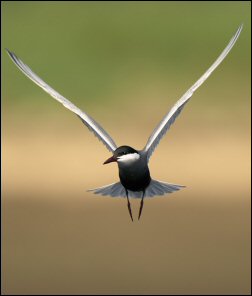Gansu Province

Birding Gansu
Gansu is a dumbbell-shaped Chinese Province that separates the Tibetan Plateau from the arid wastes of Mongolia. Traditionally, the Hexi Corridor – which forms the middle part of the province – was the only route from lowland China to the west. This eastern section of the Silk Road has left Gansu with a rich heritage of cultural relics. Although the west of Gansu is culturally interesting, there is little here for world birders. Dunhuang has made a tourist attraction out of its’ towering sand dunes to the south of town where visitors to Crescent Moon Lake will enjoy the scenery. However, the birds are very European, such as calling Common Cuckoo and Great Crested Grebe on the water. The nearby Mogao Caves are where Sir Mark Aurel Stein bought a significant proportion of the British Museum’s collection of oriental scrolls and tapestries for one hundred pounds in 1907. Hoopoes forage around the car park.Further east the town of Zhangye (once known as Kanchow) was home to Marco Polo for a year in around 1275. 60km to the south are the Qilian Mountains, where Horses’ Hoof Temple attracts a lot of visitors. The ancient Buddhist grottoes, carved into solid rock have both Indian and Chinese influences. For the birdwatcher, the hills nearby are home to Blue-eared Pheasants, Pine Buntings, Beautiful Rosefinches and five species of redstart, including the striking endemic Alashan Redstart. The southeastern part of Gansu (south of the capital, Lanzhou) is wetter and more wooded as one progresses south toward the Min Mountains on the border with Sichuan. The area was worked by the Russian collector M.Berezhovsky (1886-1887). He discovered for science such enigmatic birds as birds as Snowy-cheeked Laughingthrush (named for V.P.Sukatschev, his sponsor), Rusty-breasted Tit (originally named after Pere David) and Rusty-fronted Parrotbill (originally named after his fellow Russian, Przevalski).The closest many birders get to Gansu on commercial birding tours is Rouergai, on the grassy plains of Sichuan. 85km north lies the town of Langmusi, which straddles the Gansu/Sichuan border with two large temples, one in each province. Continuing practice of ‘sky burials’ nearby means that large raptors, including Cinereous Vulture are numerous. A small ravine along the stream at the top end of town boasts Blue-eared Pheasants, Kessler’s Thrush, and Wallcreepers, the last species practically at arms’ length. Back in the main street a backpacker café sells cold beer and ‘Yak Burgers’. Really, what more could a travelling world birder want?
-
John & Jemi Holmes
| johnjemi@gmail.com
http://johnjemi.blogspot.com/
-
BR NNR Baishuijiang
WebpageSatellite ViewBaishuijiang Biosphere Reserve is located in the Wenxian County of Gansu Province. One of the primary aims of this biosphere reserve is the conservation of the Giant Panda (Ailuropoda melanoleuca), and Baishuijiang is one of the regions with the highest Panda populations in China. The area is also important from a biodiversity perspective since it offers a large variance of elevations including evergreen broad-leaved forests and alpine meadows. 180 species of birds have been recorded. -
NNR Gahai Zecha
InformationSatellite ViewThere are abundant resources of wild animals and plants and the grass is abundant too. Many rare migrated animals and birds love the place as their homes and breeding bases. -
NNR Liancheng
InformationSatellite ViewLiancheng National Nature Reserve is located in Gansu Province in the Yellow River Basin. It consists of 47,930 hectares protecting the spruce ecosystem.
-
Migratory birds land on Gansu lakes to enjoy spring
ArticleFlocks of migratory birds have reached the Sugan Lakes in Aksay Kazak Autonomous County of northwest China's Gansu Province.

